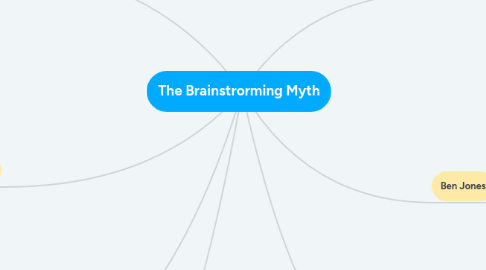The Brainstrorming Myth
by Duru lal Özkalaycı


1. Charlan Nemeth
1.1. Suggest that the ineffectiveness of brainstorming stems from the very thing that Osborn thought was most important.
1.2. Findings show that debate and criticism do not inhibit ideas but, rather, stimulate them relative to every other condition.
1.3. Dissent stimulates new ideas because it encourages us to engage more fully with the work of others and to reassess our viewpoints.
1.4. “Authentic dissent can be difficult, but it’s always invigorating,” Nemeth says. “It wakes us right up.”
2. Brian Uzzi
2.1. Musicals are a model of group creativity
2.2. He spent years analyzing the teams behind four hundred and seventy-four productions.
2.3. Uzzi devised a way to quantify the density of these connections, a figure he called Q.
2.4. Q above 3.2 < Average Q > Belove 1.7
3. Isaac Kahone
3.1. “If you want people to work together effectively, these findings reinforce the need to create architectures that support frequent, physical, spontaneous interactions,”
3.2. He conducted research with groups to determine the effect of physical proximity on the quality of the research.
3.3. When coauthors were closer together, their papers tended to be of significantly higher quality.
4. Yale
4.1. Forty-eight male undergraduates were divided into twelve groups and given a series of creative puzzles.
4.2. The results were a sobering refutation of Osborn.
4.3. Solo students generated more ideas than brainstorming groups.
5. Alex Osborn
5.1. a partner in the advertising agency
5.2. “Your Creative Power”
5.2.1. Filled with tricks and strategies

